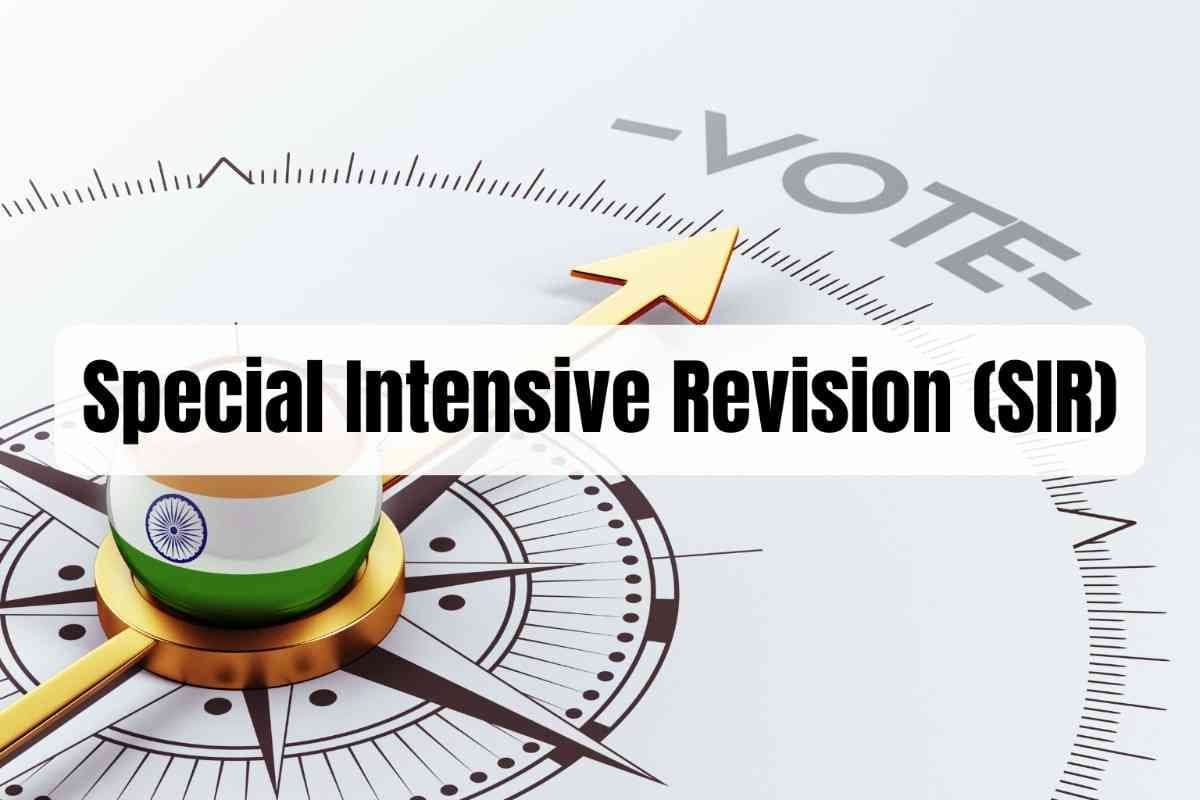Tuberculosis in India: Types, Symptoms, Challenges & Elimination Strategy 2025
Jul, 2025
•4 min read
Why in the News?
India reduced TB cases by 17.7% from 2015 to 2023, according to the WHO Global Tuberculosis Report 2024. This decline is more than double the global average, indicating India's significant progress in combating tuberculosis.
Why Cover This Topic for UPSC?
- Important for Prelims & Current Affairs
- Relevant for GS Paper I (Population & Society)
- Relevant for GS Paper III (Public Health, Social Justice, & Welfare, Science & Technology).
- Relevant for GS paper II (Governance, Social Justice).
- Crucial for Essay topics (Health & public policies).
What is Tuberculosis (TB)?
Tuberculosis (TB) is a disease caused by the bacteria Mycobacterium tuberculosis, which primarily affects the lungs. It spreads through the air when people with active TB cough, sneeze, or speak, releasing respiratory droplets containing TB bacteria.
Key Facts About Tuberculosis:
- World Tuberculosis (TB) Day is observed every year on March 24th to raise awareness about ending TB, the world’s deadliest infectious disease.
- It marks Dr. Robert Koch’s 1882 discovery of the TB bacterium.
- This year’s theme is “Yes! We Can End TB: Commit, Invest, Deliver.”
- TB is both preventable and curable with proper treatment.
- The disease has been present in humans since ancient times and was historically known as "consumption" due to the way it consumed patients.

Types of Tuberculosis
Tuberculosis doesn’t affect everyone the same way. Depending on how the infection develops and spreads in the body, TB can be classified into different types.
1. Latent TB (Inactive TB)
- Latent TB occurs when people have TB bacteria in their bodies, but the bacteria are inactive.
- However, without treatment, latent TB can develop into active TB disease at any time.
2. Active TB (TB Disease)
- Active TB is when the bacteria multiply in the body and cause symptoms.
- People with active TB disease feel sick and can spread the germs to others.
- This form is contagious and requires immediate treatment to prevent transmission and death.
3. Pulmonary TB
- Pulmonary TB affects the lungs and is the most common form of TB.
- Symptoms include a persistent cough lasting three weeks or longer, coughing up blood or phlegm, chest pain, and shortness of breath.
4. Extrapulmonary TB
- Extrapulmonary TB affects organs and tissues outside the lungs, accounting for approximately 15-25% of all TB cases. Common forms include:
- TB Lymphadenitis: The most common form, affecting lymph nodes, particularly in the neck and supraclavicular regions.
- Skeletal TB: Affects bones and joints, causing extreme and persistent localised pain and swelling.
- Gastrointestinal TB: Affects the digestive system and must be distinguished from Crohn's disease.
- TB Meningitis: Affects the central nervous system and can be fatal without prompt treatment
- Miliary TB: A severe form where TB spreads throughout the body via the bloodstream.
Also read: India’s Road to Universal Health Coverage
Multiple Choice Questions
QUESTION 1
Easy
Consider the following statements with respect to Tuberculosis (TB):
- Tuberculosis is caused by the bacteria Mycobacterium tuberculosis that most often affect the lungs.
- People infected with TB bacteria have a very high risk of falling ill with TB.
- Multidrug-resistant TB (MDR-TB) is TB that does not respond to at least isoniazid and rifampicin, the two most powerful anti-TB drugs. Which of the statements given above are correct?
Select an option to attempt
Symptoms of Tuberculosis
These are the usual symptoms of Active TB:
- Prolonged cough lasting three weeks or more
- Chest pain
- Weakness and fatigue
- Unexplained weight loss
- Loss of appetite
- Fever
- Night sweats
- Coughing up blood or mucus (in pulmonary TB)
Moving on, let’s understand effective treatment and prevention strategies that can control the disease and save lives.
Treatment and Prevention of TB
TB is curable with proper medical care. Treatment involves a combination of medications, and the entire course of treatment is essential to avoid relapse and prevent drug resistance.
- Antibiotics: TB disease is treated with a standard 6-month course of four antibiotics: rifampicin, isoniazid, pyrazinamide, and ethambutol.
- BCG Vaccination: The Bacille Calmette-Guérin (BCG) vaccine is currently the only licensed vaccine against TB. It is 80% effective in preventing TB for 15 years and is more effective against severe forms of TB in children.
Tuberculosis in India: Key Highlights
India's fight against tuberculosis represents one of the world's most significant public health campaigns, with the ambitious goal of eliminating TB by 2025, five years ahead of the global target.
India has shown remarkable progress in recent years:
1. Incidence Reduction: TB incidence rate declined by 17.7% from 237 per lakh population in 2015 to 195 per lakh population in 2023.
2. Mortality Reduction: TB mortality declined by 21.4% from 28 per lakh population in 2015 to 22 per lakh population in 2023.
3. Case Detection and Treatment:
- Highest-ever case notifications reporting 25.5 lakh TB cases in 2023, and 26.07 lakh cases in 2024.
- Treatment coverage improved to 89% in 2023 from 72% in 2015.
- Missing cases reduced from 15 lakh in 2015 to just 2.5 lakh in 2023.
4. State-Wise TB Performance Index:
- Best Performing States/UTs: Meghalaya, Punjab, Gujarat.
- Poor Performing States: Uttar Pradesh, Maharashtra, Madhya Pradesh.
Also cover this topic: Nutrition in India: Challenges, Schemes, and the Road Ahead
Key Challenges to Tuberculosis Elimination by 2025
Achieving tuberculosis (TB) elimination by 2025 faces multiple obstacles spanning biomedical, socioeconomic, health-system, and other domains. The principal challenges include:
1. Diagnostic Gaps and Delays
- Decentralised diagnostic capacity is lacking in rural and peri-urban areas, leading to long travel distances, high out-of-pocket costs, and multiple visits before diagnosis.
- Health workers often under-recognise typical presentations, and infrastructural deficits hinder sputum transport and laboratory quality assurance.
2. Drug-Resistant TB
- Some TB bacteria no longer respond to usual medicines.
- Treating these cases takes longer, costs more, causes more side effects, and many patients stop treatment halfway.
3. Weak Health Systems
- Strong primary care is essential, but often missing, and separating TB and HIV or diabetes services makes it hard to treat both conditions at once.
- Clinics often run out of drugs, and staff shortages mean less training and fewer patient follow-ups.
4. Vulnerable Populations
- High TB burden among migrant workers, urban slum dwellers, and tribal populations.
- Limited healthcare access for marginalised communities.
- Special challenges in reaching prisoners, miners, and other high-risk groups.
5. Insufficient Financing and Political Commitment
- Sustained, adequate funding is critical to scale up prevention, diagnosis, treatment, research, and community engagement.
- Many national TB programmes struggle with budget shortfalls, limiting procurement of diagnostics and drugs, human resources, and expansion of services.
Ending TB by 2025 demands more funding, coordinated social and health-system efforts, faster research, and stronger community engagement worldwide.
Also read: India's Path to Health Leadership
India’s Fight Against Tuberculosis: Key Initiatives
India has launched one of the world’s most ambitious public health missions under the National Tuberculosis Elimination Programme (NTEP), aiming to eliminate TB by 2025.
1. National Tuberculosis Elimination Programme
- In 2020, the National Tuberculosis Control Programme (RNTCP) was rebranded as the National Tuberculosis Elimination Programme (NTEP) to underscore India’s commitment to eliminating TB by 2025.
- The NTEP operates under the National Strategic Plan, structured around four strategic pillars: Detect, Treat, Prevent, and Build (DTPB).
- These pillars accelerate case finding, ensure quality-assured treatment, implement preventive interventions, and strengthen health systems and programmatic capacities.
2. Pradhan Mantri TB Mukt Bharat Abhiyaan (PMTBMBA)
- Launched on September 9, 2022, the Pradhan Mantri TB Mukt Bharat Abhiyaan (PMTBMBA) mobilises communities, corporates, institutions, and individuals in a “Jan Andolan” (people’s movement).
- The initiative provides nutritional, diagnostic, and vocational support to TB patients, thereby enhancing treatment outcomes and reducing the disease burden.
3. NIKSHAY Portal for Real-Time Surveillance
- All TB patients registered on the NIKSHAY portal receive ₹1,000 per month for nutritional support throughout their treatment course under this scheme.
- Additionally, energy-dense nutritional supplementation is provided to undernourished patients (BMI < 18.5) during the intensive treatment phase to improve recovery rates.
4. 100-Day TB Elimination Campaign
- In December 2024, a nationwide 100-day campaign was launched across 347 districts to intensify case detection and shorten diagnosis-to-treatment initiation times.
- The campaign also extended services through 160,000 Ayushman Arogya Mandirs (wellness centres) in high-burden areas, bolstering local outreach and reducing transmission.
5. Ni-Kshay Mitra Initiative
- As part of the Pradhan Mantri TB Mukt Bharat Abhiyan (PMTBMBA), the Ni-Kshay Mitra initiative encourages NGOs, corporates, groups, and individuals to “adopt” TB patients.
- They support them for at least six months by providing personalised nutritional, social, or economic assistance.
- This is the world’s largest crowdsourcing drive for TB patient support, having registered over 2.59 lakh Mitras who have committed to caring for more than 1.18 crore patients.
Also cover this key topic: India’s First Transgender-Led Health Clinic: Sabrang Clinic in Hyderabad
Way Forward
India's journey toward TB elimination by 2025 represents one of the most ambitious public health goals globally. The lessons learned from India's experience will be invaluable for global TB elimination efforts. It demonstrates the possibility of defeating this ancient disease through sustained commitment and evidence-based interventions.
Unlock your UPSC success with SuperKalam! Get instant doubt clearance, customized study plans, unlimited MCQ practice, and fast Mains answer feedback.
Join thousands of aspirants learning with India’s AI-powered mentor today!
Related Blogs

Special Intensive Revision (SIR) of Electoral Rolls: Definition, Objectives, Significance, & Challenges
Dec, 2025
•4 min read

UNICEF Day 2025: 79 Years of Global Commitment to Child Rights & Protection
Dec, 2025
•4 min read

Vande Mataram: The National Song of India UPSC | Recent Debate in the Parliament
Dec, 2025
•6 min read